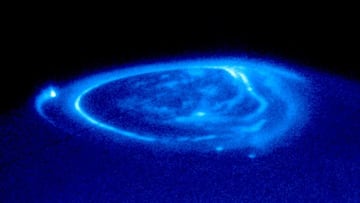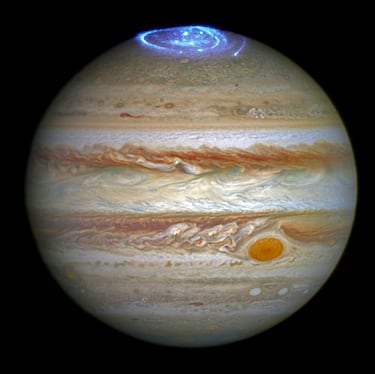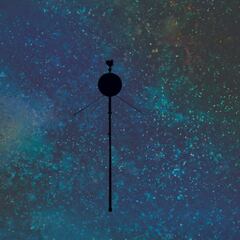NASA’s incredible discovery on Jupiter may change the way we understand the solar system
Researchers studying Jupiter have made discoveries that could help scientists better understand fundamental physics of planets’ magnetospheres.

While apart from being in the same solar system, it would seem that Earth and Jupiter have very little else in common. But new discoveries about the massive gas giant may shed light on how the space environment works around out little third rock from the Sun. It could also settle a long-running debate.
A group of researchers studying data gathered by NASA’s Juno spacecraft of Jupiter’s magnetosphere found that there is a crescent-shaped area of open magnetic field lines at its polar regions which are otherwise largely closed.
NASA’s incredible discovery on Jupiter may change the way we understand the solar system
The Earth’s magnetosphere is being constantly bombarded by charged particles from the Sun but our protective magnetic shield deflects most of them. However, every now and then there is a large-scale magnetic eruption, generally resulting in a coronal mass ejection and solar flare. These events accelerate the charged particles in the solar atmosphere to very high velocities causing a solar storm.
While these events when they reach Earth can produce a spectacular aurora borealis, or Northern Lights, display, they can also be dangerous to our infrastructure. “We are one big space weather event from losing communication satellites, our power grid assets, or both,” said Peter Delamere, one of the co-authors of a paper in AGU Advances.

Delamere, a professor at the UAF Geophysical Institute and the UAF College of Natural Science and Mathematics explained that “by exploring a larger space such as Jupiter, we can better understand the fundamental physics governing Earth’s magnetosphere and thereby improve our space weather forecasting.”
Unlike Jupiter, the Earth’s magnetosphere is largely open at its north and south poles. It’s where the magnetic field lines are closed that we can see an aurora but the energy and momentum of the charged particles in the solar wind along the open field lines do transfer to the closed ones. This crossover of energy is what can cause havoc to communications and power grids in areas impacted.
Additionally, the study may be able to sway the ongoing debate about whether Jupiter has for the most part an open magnetosphere at its poles or mostly closed. It has been going on since NASA Voyager 1 and 2 flew past the gas giant in 1979 but Juno, which enter Jupiter’s orbit in 2016 and has sent back reams of data.
Related stories
A previous paper by Binzheng Zhang of the University of Hong Kong on which Delamere was a co-author, suggested that the Jovian magnetosphere had two regions of open field lines at its poles. “The Zhang result provided a plausible explanation for the open field line regions and this year we provided the compelling evidence in the Juno data to support the model result,” Delamere said.
This latest study concludes that the closed magnetic field lines connect to the gas giant’s opposite hemispheres rotate with the planet while the open field lines connect to the solar wind and move with it.



Complete your personal details to comment